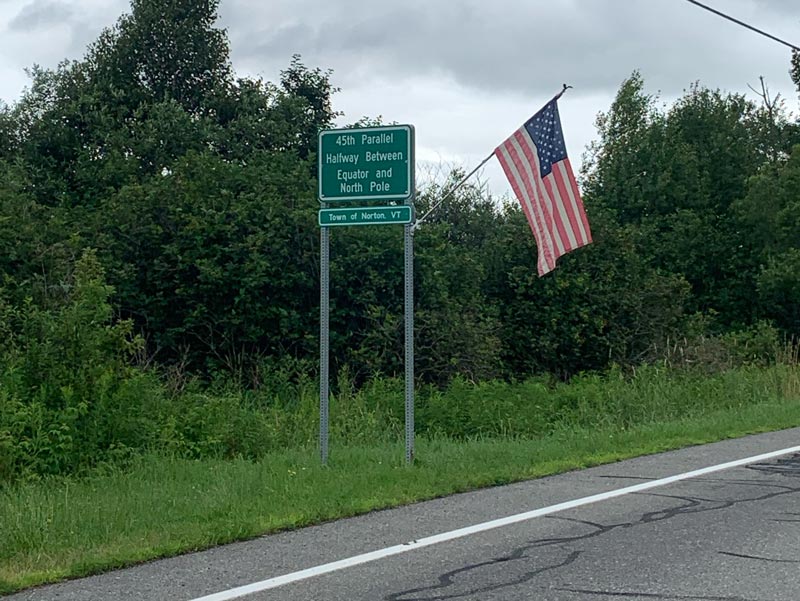Norton, Vermont
A little less than a mile south of the tiny town of Norton, VT a highway sign alongside Vermont route 114 marks the 45th Parallel. The sign reads:
|
45th Parallel Halfway Between Equator and North Pole |
Norton is a small town of roughly 200 inhabitants, the northernmost in Vermont, on the Quebec border a little north of the 45th Parallel. From the 1880s to 1950s the town hall and post office were located in Nelson's general store which sat directly on the U.S.-Canada border. A number of other buildings in this area also built across the border have become local tourist curiosities. Nelson's store offered merchandise from both countries at separate cash registers for each currency, had two phones for calling either country, and its lights were served by two different electric utilities. In previous times, area residents crossed freely over the border to visit family and attend church in either country, but in 2015 U.S. Customs officials barricaded the road in front of the store to stop through-traffic. The 150-year old store closed in 2021 and its deteriorating building was demolished. In keeping with a 1960 U.S.-Canada treaty, new buildings within 10 feet of the border are not allowed, and existing buildings not permitted for repair.
The Vermont–Quebec border was originally defined as the 45th Parallel by the 1783 Treaty of Paris at the end of the Revolutionary War. The border followed a survey done from 1771-1774 by John Collins and Thomas Valentine through more than 150 miles of rugged forest from the Connecticut River to the St. Lawrence River. Over the next decades, as settlers cleared the forests along the border, the errors of that survey became more obvious. Many wondered if the border would be re-surveyed to follow the Parallel more precisely, which would cede part of Vermont to Quebec where the survey erred to the north of the Parallel, and part of Quebec to New York, where the survey erred to the south. Finally the 1842 Webster-Ashburton Treaty settled the border as the wavering Collins-Valentine survey line, mistakes and all, rather than the mathematically-exact 45th Parallel line as originally intended.
Thanks to Amy Lafayette for sending this photo.
View 45th Parallel Markers in Google Maps



